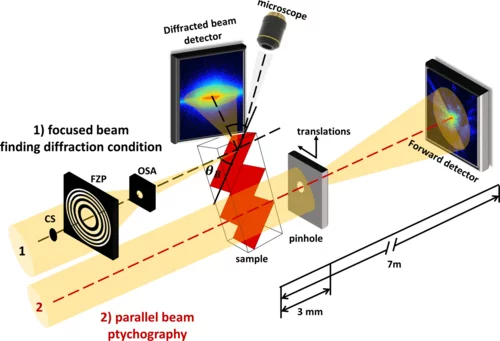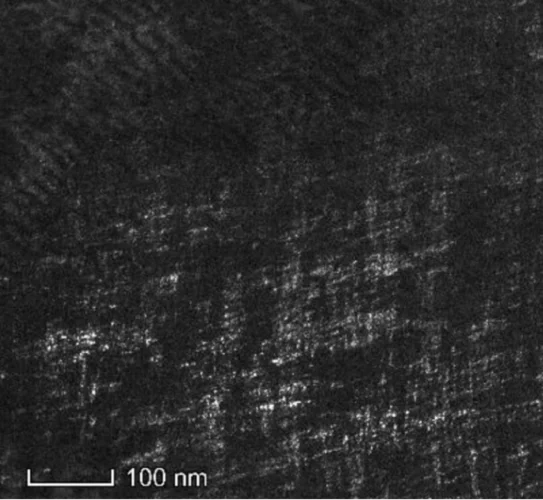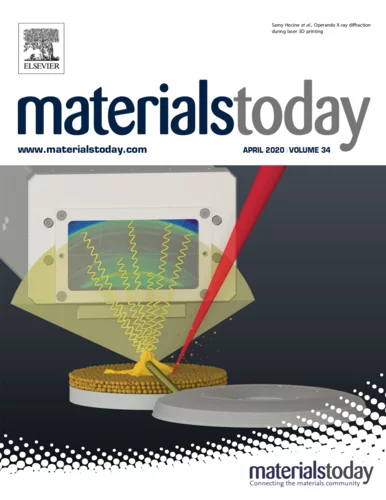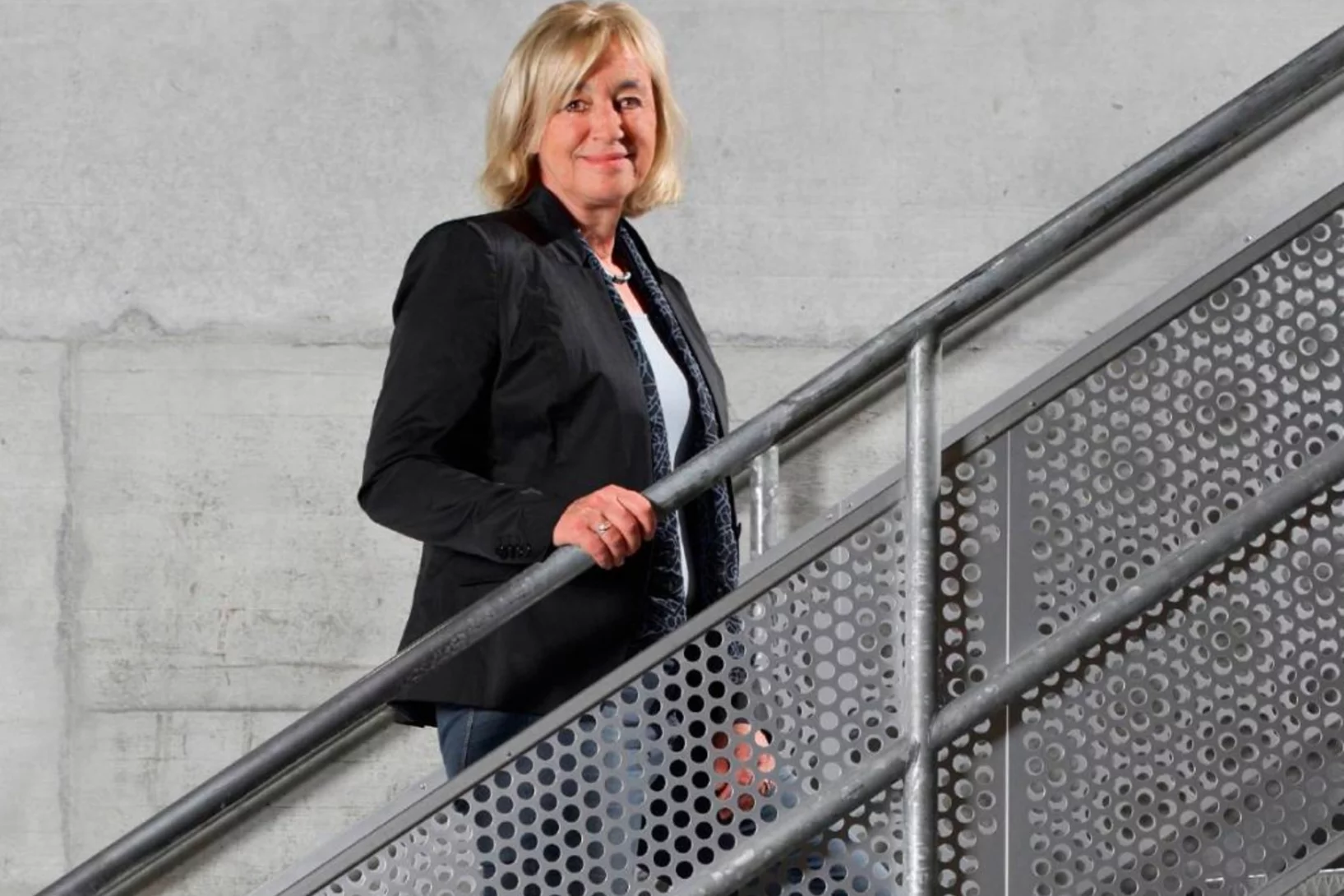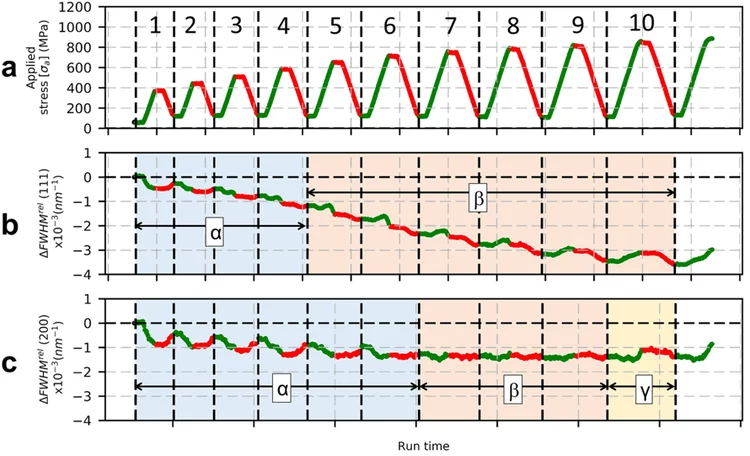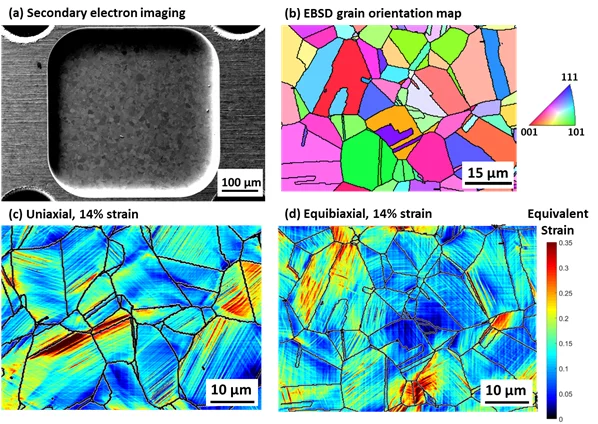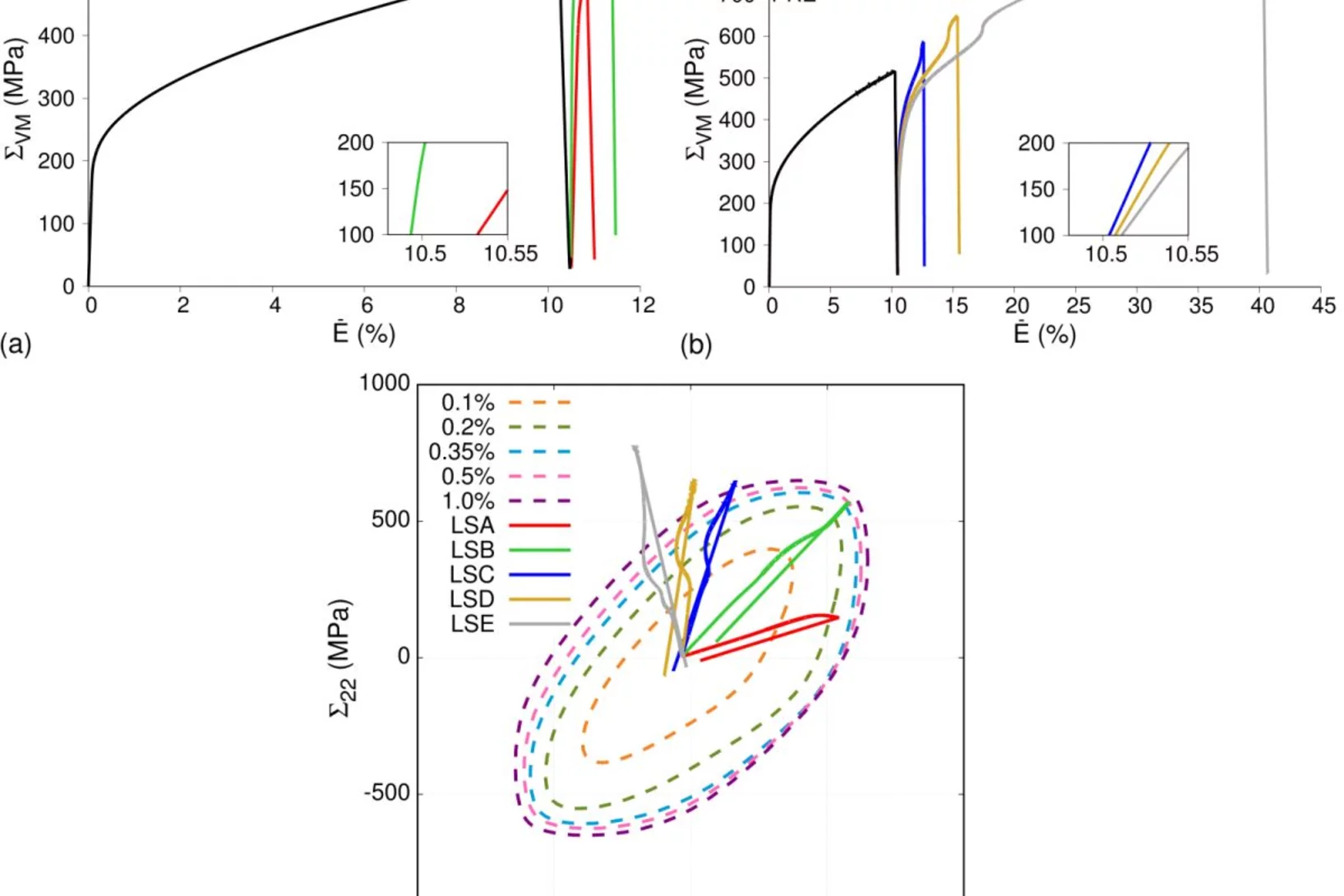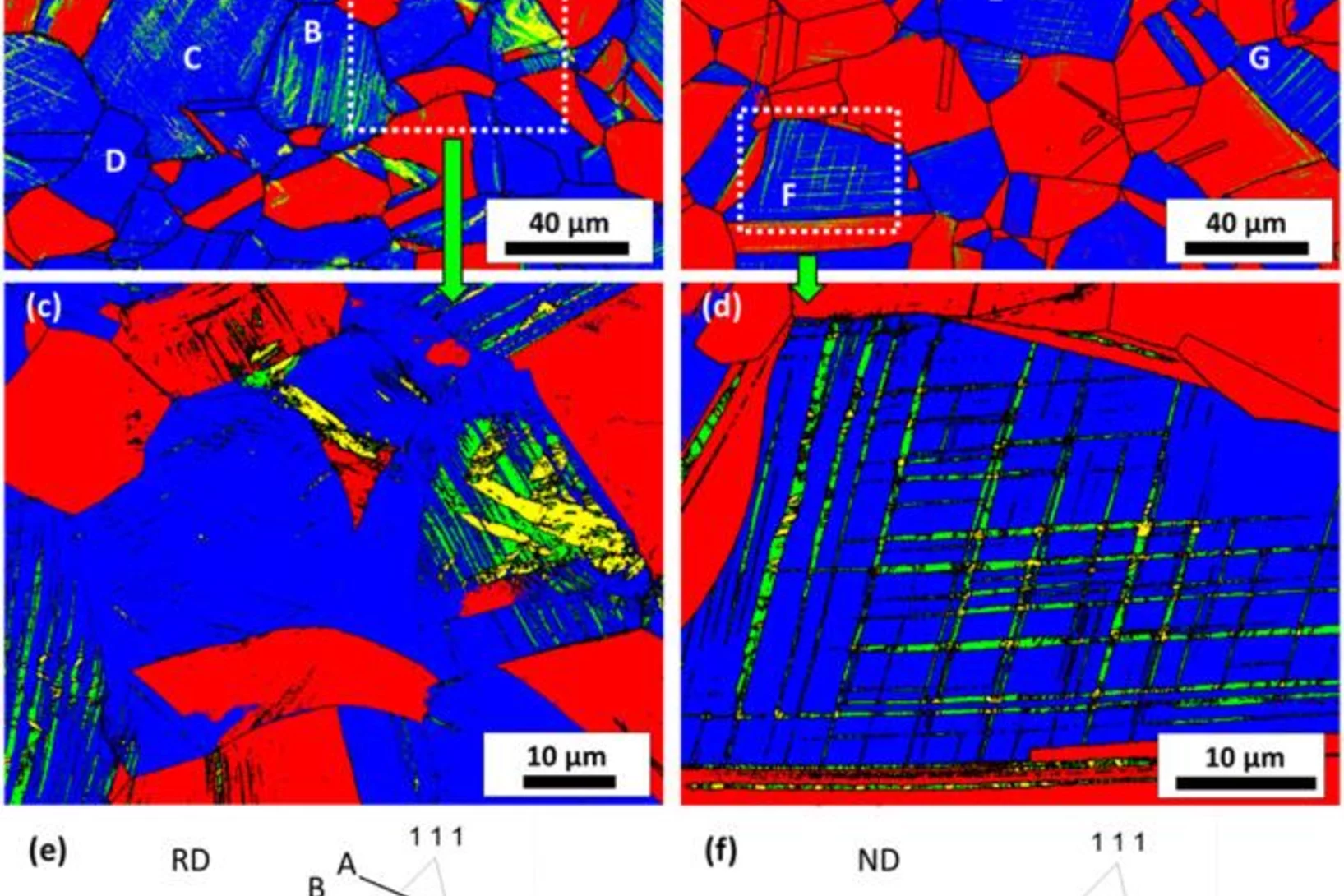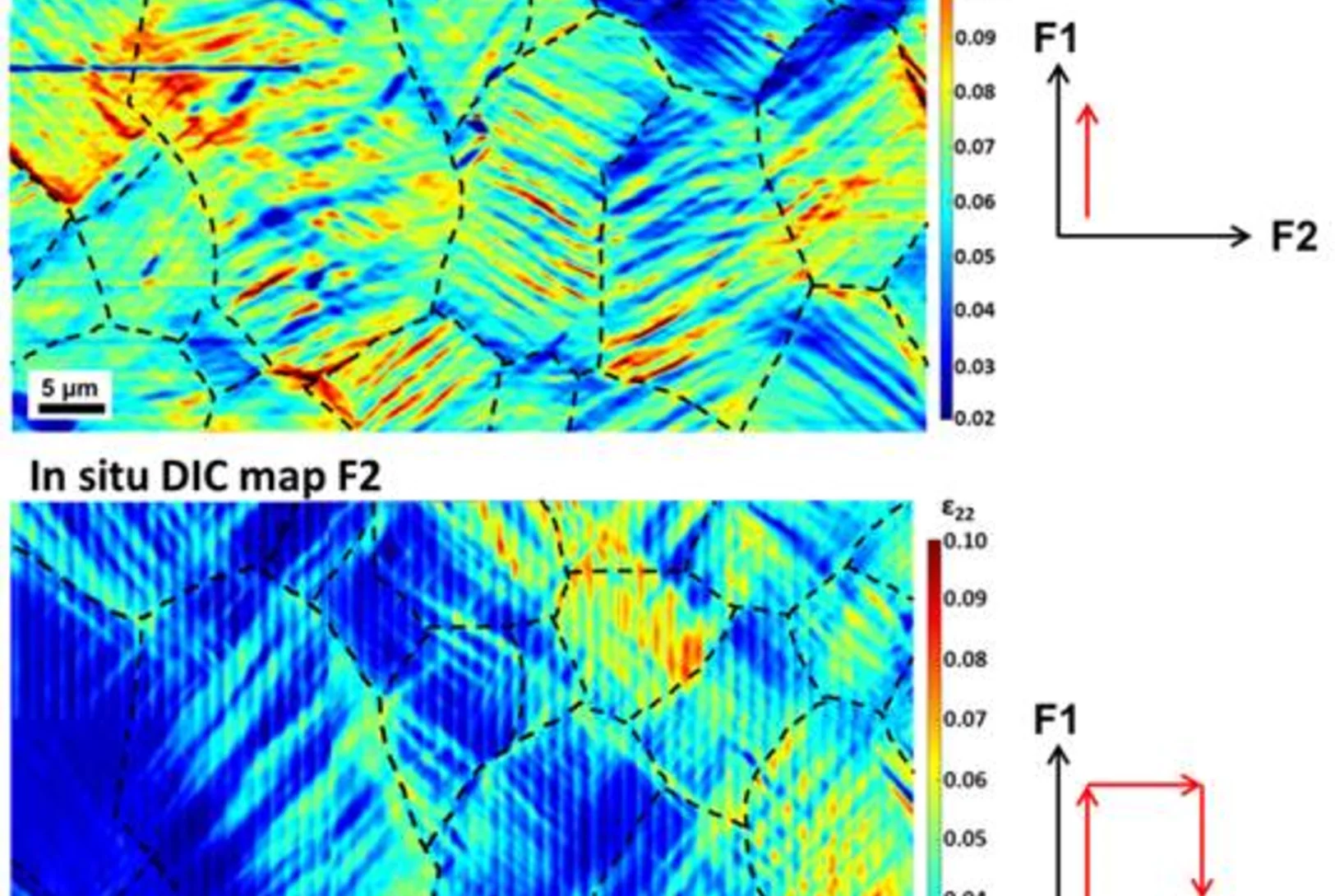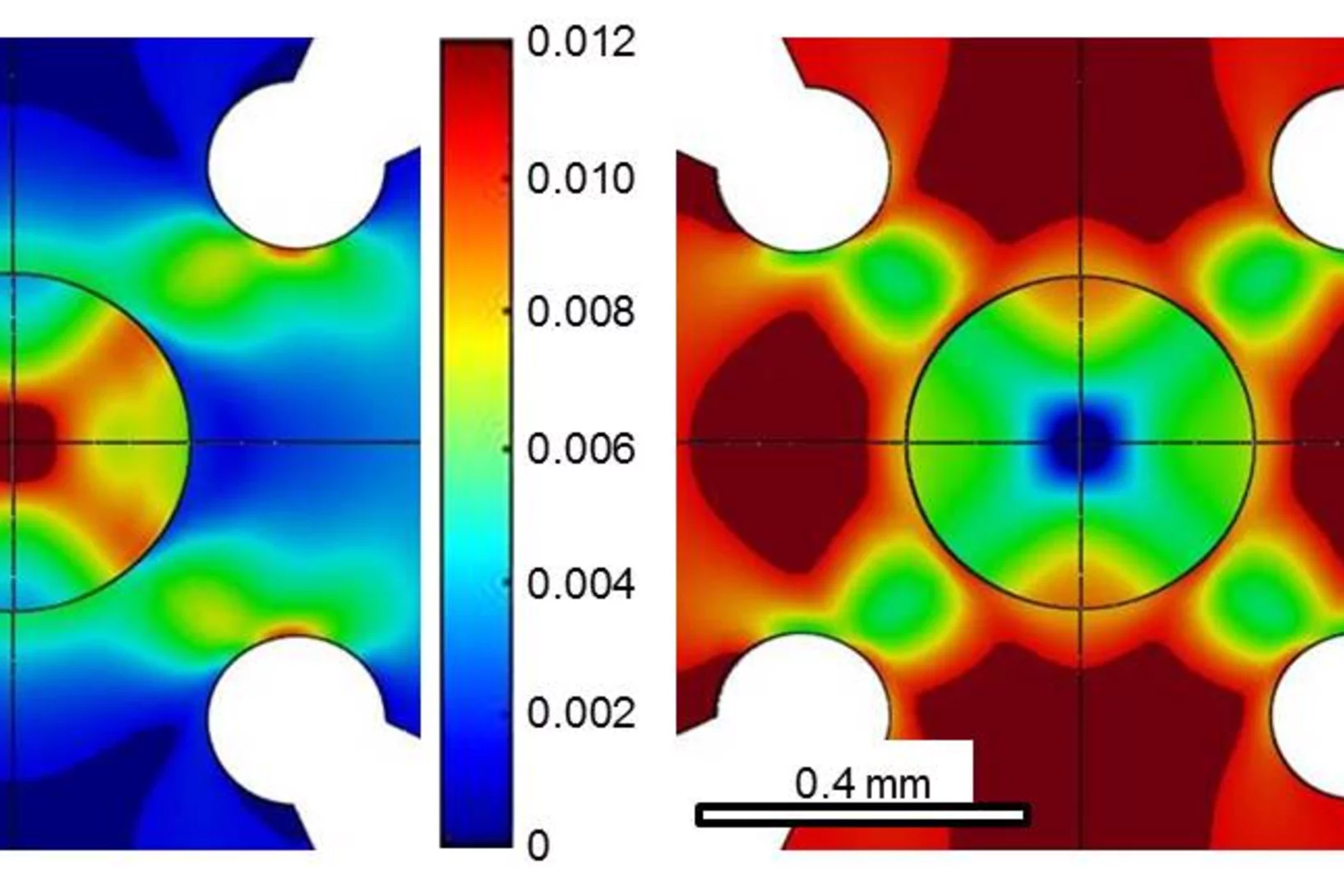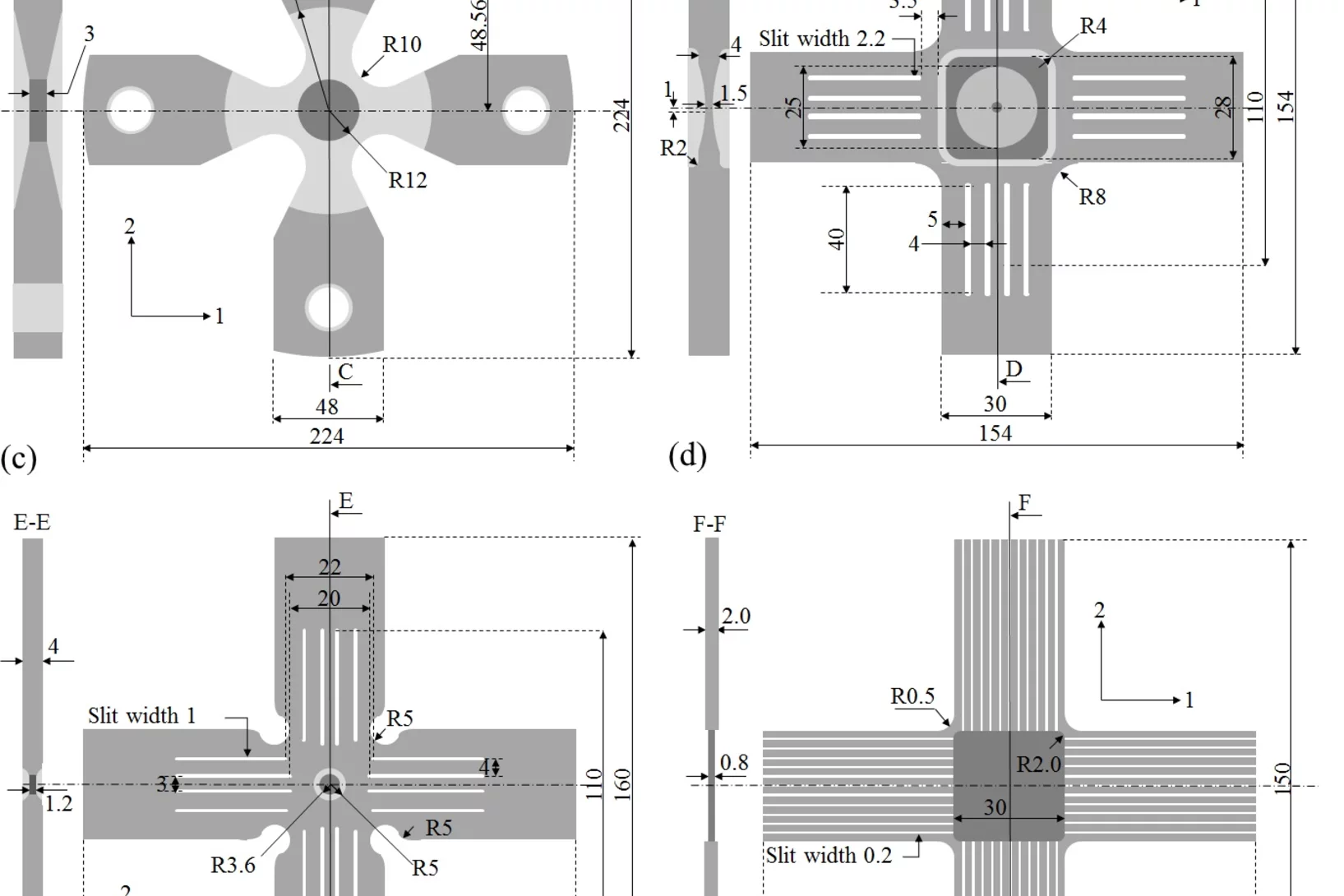X-ray ptychographic topography: A robust nondestructive tool for strain imaging
We present x-ray ptychographic topography, a method for strain imaging, and demonstrate its use on an InSb micropillar after microcompression, where the strained region is visualized with a spatial resolution of 30 nm.
A miniaturized selective laser melting device for operando X-ray diffraction studies
We report on the development of a miniaturized device for operando X-ray diffraction during laser 3D printing. Its capabilities are demonstrated by ex situ printing of complex shapes and operando X-ray diffraction experiments using Ti-6Al-4V powder.
Influence of thermo-mechanical history on the ordering kinetics in 18 carat Au alloys
In situ high-energy synchrotron X-ray diffraction experiments in combination with electron microscopy observations reveal the influence of the thermo-mechanical history and chemical composition on the ordering kinetics during isochronal heating of 18 karat Au alloys.
Operando X-ray diffraction during laser 3D printing
Ultra-fast operando X-ray diffraction experiments reveal the temporal evolution of low and high temperature phases and the formation of residual stresses during laser 3D printing of a Ti-6Al-4V alloy. The profound influence of the length of the laser-scanning vector on the evolving microstructure is revealed and elucidated.
Characterisation of work hardening and springback in Ti
Interrupted standard tensile tests with in situ x-ray diffraction and quasi-in situ electron backscatter diffraction reveal the origin behind the work hardening plateau and springback.
Prof. Helena Van Swygenhoven presented the plenary Kavli lecture at the MRS spring meeting 2019
Plenary Session Featuring The Fred Kavli Distinguished Lectureship in Materials Science:
Tuesday, April 23
8:15 am – 9:30 am
PCC North, 100 Level, Ballroom 120 D
Revealing the role of microstructure architecture on strength and ductility of Ni microwires by in-situ synchrotron X-ray diffraction
The effect of diameter reduction on the mechanical properties of cold-drawn nickel microwires has been analyzed by a combination of in situ X-ray diffraction and electron backscatter diffraction observations.
A High Resolution Digital Image Correlation Study under Multiaxial Loading
We have developed a new cruciform geometry with reduced thickness at the center, which allows reaching high plastic strain under equibiaxial loading. The novel thinning method results in excellent surface quality, suitable for electron backscatter diffraction (EBSD) and high-resolution digital image correlation (HRDIC) investigations. We performed an in-situ HRDIC study on a 304 austenitic stainless steel using the new cruciform geometry to follow the slip activity under uniaxial and equibiaxial loadings.
In situ tension-tension strain path changes of cold-rolled Mg AZ31B
The mechanical behavior of cold-rolled Mg AZ31B is studied during in-plane multiaxial loading and tension-tension strain path changes using in situ neutron diffraction and electron backscatter diffracion.
Mechanical response of stainless steel subjected to biaxial load path changes: cruciform experiments and multi-scale modeling
In this work, we have enhanced our originally proposed experiment-modeling synergy in Upadhyay et al. Acta Mat. 2016, to capture the stress evolution in the complex cruciform geometry during arbitrary multi-axial load path changes. We perform cruciform simulations using the implementation of the visco-plastic self-consistent (VPSC) model as a user material (UMAT) into the ABAQUS finite element (FE) solver. We also use the Elasto-viscoplastic fast Fourier transform (EVP-FFT) approach to compute yield surfaces. This experiment-modeling synergy is exploited to understand the mechanical response (including the elastic response, Bauschinger effect and hardening) of 316L stainless steel following biaxial load path changes.
Suppressed martensitic transformation under biaxial loading in low stacking fault energy metastable austenitic steels
In-situ neutron diffraction studies performed on metastable 201 stainless steel combined with EBSD measurements confirm that ε-martensite is a precursor for α′-martensite during uniaxial and equibiaxial deformation at the same loading rate. In both loading states, the grains that contain martensite belong to orientations for which the leading partial dislocations have higher Schmid factor than the trailing partial dislocations. The martensitic transformation is suppressed during equibiaxial loading as a consequence of the different textures formed during deformation.
Martensitic transformation under multiaxial deformation
Researchers at PSI have established a link between the martensitic transformation, microstructural evolution and the mechanical behavior under multiaxial deformation in a NiTi alloy by using a unique combination of in situ high-resolution Digital Image Correlation (DIC), in situ X-ray diffraction and electron microscopy characterization.
Dislocation interactions at reduced strain rates in atomistic simulations of nanocrystalline Al
Molecular dynamics simulations of transient stress drops have been carried out in different regimes on a nanocrystalline Aluminum sample with average grain size of 12 nm. Besides confirming the interpretation of experimental results obtained during in situ X-ray diffraction, the creep simulations performed at 2 or 3 orders of magnitude lower strain rates than usual reveal deformation mechanisms that have not been observed previously.
Composite laminated cruciform design for multiaxial testing of metals
Multiaxial mechanical testing of sheet metals is far from trivial, which is mainly related to issues with sample design and fabrication. PSI scientists have developed a new methodology to produce cruciform shaped samples from thin sheet metals based on a novel bottom-up approach. A proof-of-principle experiment based on polymer lamination of an aluminum thin sheet demonstrates the effectiveness of this new approach.
Stresses and Strains in cruciform samples deformed in tension
Cruciform experiments are very useful to study non-proportional strain path change behavior of engineering metals and alloys. This work studies the stress response of 6 prominently used cruciform geometries deformed under tension. Results show that for most of the cruciform samples, the gauge stresses are non-linearly coupled to the applied forces in both arms. Cruciform geometries based on the ISO standard are able to decouple these stresses but negligible gauge plastic strains are reached prior to failure.
A Miniaturized Biaxial Deformation Rig for in situ Mechanical Testing
Researchers at PSI have developed a new unique miniaturized biaxial deformation rig, which allows to apply in-plane biaxial stress states with arbitrary stress ratios and to perform strain path changes on thin-sheet metals. The device is optimized for in situ usage inside a scanning electron microscope and at synchrotron beam lines.
